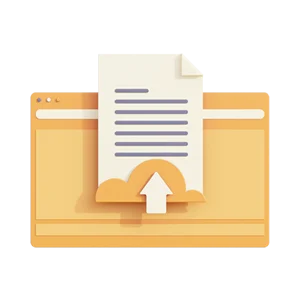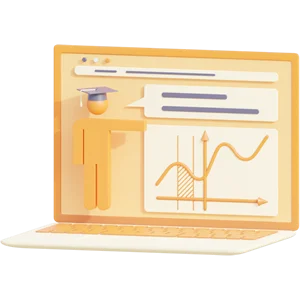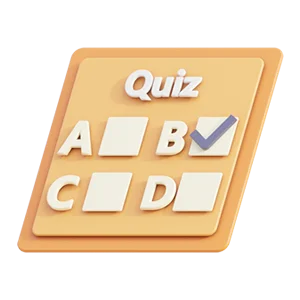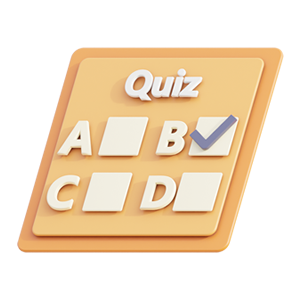HESI Critical Care Exam 124 set questions with rationale answers graded A+
HESI Critical Care Exam 124 set questions with rationale answers graded A+
1.A client who has active tuberculosis (TB) is admitted to the medical unit. What action is most important for the nurse to implement?
A. Fit the client with a respirator mask.
B. Assign the client to a negative air-flow room.
C. Don a clean gown for client care.
D. Place an isolation cart in the hallway - Assign the client to a negative air-flow room RATIONALE:
Active tuberculosis requires implementation of airborne precautions, so the client should be
assigned to a negative pressure air-flow room (D). Although (A and C) should be implemented
for clients in isolation with contact precautions, it is most important that air flow from the room
is minimized when the client has TB. (B) should be implemented when the client leaves the isolation environment.
2.A client is receiving atenolol (Tenormin) 25 mg PO after a myocardial infarction. The nurse
determines the client's apical pulse is 65 beats per minute. What action should the nurse implement next?
A. Measure the blood pressure.
B. Reassess the apical pulse.
C. Notify the healthcare provider.
D. Administer the medication. - Administer the medication RATIONALE:
Atenolol, a beta-blocker, blocks the beta receptors of the sinoatrial node to reduce the heart rate, so the medication should be administered (C) because the client's apical pulse is greater than 60.
(A, B, and D) are not indicated at this time.
3.The nurse is assessing a client and identifies a bruit over the thyroid. This finding is consistent with which interpretation? A. Hypothyroidism.
B. Thyroid cyst.
C. Thyroid cancer.
D. Hyperthyroidism - Hyperthyroidism
Rationale:Hyperthyroidism (D) is an enlargement of the thyroid gland, often referred to as a goiter, and a
bruit may be auscultated over the goiter due to an increase in glandular vascularity which increases as the thyroid gland becomes hyperactive. A bruit is not common with (A, B, and C).
A 56-year-old female client is receiving intracavitary radiation via a radium implant. Which nurse should be assigned to care for this client?
A. The nurse who is caring for another client receiving intracavitary radiation.
B. A nurse with Marfan's syndrome who is postmenopausal.
C. A nurse with oncology experience who may be pregnant.
D. The nurse who is caring for another client who has Clostridium difficile. - B. A nurse with Marfan's syndrome who is postmenopausal.
RATIONALE:
A client receiving intracavity radiation poses a radiation hazard as long as the intracavity
radiation source is in place. A nurse's ability to care of this client is not affected by Marfan's
syndrome (B), which is a hereditary disorder of connective tissues, bones, muscles, ligaments
and skeletal structures. The goal is to limit any one staff member's exposure to the calculated
time span based on the half-life of radium, such as the number of minutes at the bedside per day,
so (A) should not be assigned. (C) should not be exposed to the radiation due to the possible
effect on the fetus. A radiation exposure decreases the immune response in the client who should not be exposed to the potential inadvertent transmission of an infectious organism (D).
A 6-year-old child is alert but quiet when brought to the emergency center with periorbital ecchymosis and ecchymosis behind the ears. The nurse suspects potential child abuse and continues to assess the child for additional manifestations of a basilar skull fracture. What assessment finding would be consistent with a basilar skull fracture? A. Hematemesis and abdominal distention.
B. Asymmetry of the face and eye movements.
C. Rhinorrhoea or otorrhoea with Halo sign.
D. Abnormal position and movement of the arm. - Rhinorrhoea or otorrhoea with Halo sign.
RATIONALE:
Raccoon eyes (periorbital ecchymosis) and Battle's sign (ecchymosis behind the ear over the
mastoid process) are both signs of a basilar skull fracture, so the nurse should assess for possible
meningeal tears that manifest as a Halo sign with CSF leakage from the ears or nose
(D). (A) is
consistent with orbital fractures. (B) occurs with wrenching traumas of the shoulder or arm fractures. (C) occurs with blunt abdominal injuries.
The nurse is assessing a client who complains of weight loss, racing heart rate, and difficulty
sleeping. The nurse determines the client has moist skin with fine hair, prominent eyes, lid retraction, and a staring expression. These findings are consistent with which disorder?
A. Grave's disease.
B. Multiple sclerosis.
C. Addison's disease.
D. Cushing syndrome. - Grave's disease RATIONALE:
This client is exhibiting symptoms associated with hyperthyroidism or Grave's disease
(A),
which is an autoimmune condition affecting the thyroid. (B, C, and D) are not associated with these symptoms.
The nurse is assessing an older client and determines that the client's left upper eyelid droops,
covering more of the iris than the right eyelid. Which description should the nurse use to document this finding?
A. A nystagmus on the left.
B. Exophthalmos on the right.
C. Ptosis on the left eyelid.
D. Astigmatism on the right. - Ptosis on the left eyelid
Rationale: Ptosis is the term to describe an eyelid droop that covers a large portion of the iris (A), which
may result from oculomotor nerve or eyelid muscle disorder. (B) is characterized by rapid,
rhythmic movement of both eyes. (C) is a distortion of the lens of the eye, causing decreased
visual acuity. (D) is a term used to describe a protrusion of the eyeballs that occurs with hyperthyroidism.
The nurse is assessing a child's weight and height during a clinic visit prior to starting school.
The nurse plots the child's weight on the growth chart and notes that the child's weight is in the
95th percentile for the child's height. What action should the nurse take? A. Question the type and quantity of foods eaten in a typical day.
B. Encourage giving two additional snacks each day to the child.
C. Recommend a daily intake of at least four glasses of whole milk.
D. Assess for signs of poor nutrition, such as a pale appearance - A. Question the type and quantity of foods eaten in a typical day.
RATIONALE:
The child is overweight for height, so assessment of the child's daily diet (C) should be determined. The child does not need (A or B), both of which will increase the child's weight.
Poor nutrition (D) is commonly seen in underweight children, not overweight.
A child is receiving maintenance intravenous (IV) fluids at the rate of 1000 mL for the first 10
kg of body weight, plus 50 mL/kg per day for each kilogram between 10 and 20. How many milliliters per hour should the nurse program the infusion pump for a child who weighs 19.5 kg?
(Enter numeric value only. If rounding is required, round to the nearest whole number.) A. 24
B. 61
C. 73
D. 58 - B
Preview document (3 of 55 pages)
Knoowy benefits
$ 27.85
 Money back guarantee
Money back guarantee
 Documents can be downloaded immediately
Documents can be downloaded immediately
 $0.50 discount when paying with balance
$0.50 discount when paying with balance
-
 Receive free quiz questions with document
Receive free quiz questions with document

Specifications
- School: Chamberlain College Of Nursing
- Course: NURSING
Document
- Section: Examinations
- Made on: 06-17-2024
- Type: .pdf
- Pages: 55
- Language: English
Seller
Hi, welcome to my Knoowy platform! Let me introduce myself through the voices of my 300+ satisfied customers:
These are some of my 5-star reviews;
"All you need to breeze through the AMCA exam!"
"This really helped me study for my phlebotomy test. I used this and other study material to study from."
"I found this to be very helpful for my CPO Exam, certified protection officer test."
"Great help for the test! (2024 AGILE SAFE 6.0 CERTIFICATION ACTUAL EXAM)"
These glowing testimonials reflect the caliber of my resources, meticulously crafted to propel you towards success. With a dedication to excellence in exam preparation, I'm here to guide you on your journey to academic and professional triumph.
Moreover, I specialize in assisting nursing students with a comprehensive range of exams, including ATI proctored exams, NCLEX, and various ATI modules such as ATI pharmacology, ATI medical surgical, ATI nutrition, ATI Fundamentals, ATI community health, ATI leadership, ATI maternal newborn, ATI Pediatrics, as well as HESI exit exams, and more.
Join the ranks of satisfied learners who have trusted my materials and witness the difference they can make in your educational pursuits.
BUY NOW TO UNLOCK YOUR FULL ACADEMIC POTENTIAL
Good luck!!
Earn from your summaries?
Subjects of NURSING - Chamberlain College Of Nursing
More NURSING ›ati ati comprehensive predictor ati fundamentals proctored ati pharmacology ati pharmacology proctored community health comprehensive health care health care / nursing health care/ nursing healthcare hesi hesi rn exit leadership maternal newborn med surg medical surgical mental health nurs nursing nursing & health pediatrics pharmacology test bank tncc
 Deal: get 10% off when you purchase 3 or more items!
Deal: get 10% off when you purchase 3 or more items!
Deal: get 10% off when you purchase 3 or more items!









